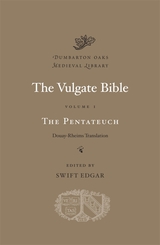
The Vulgate Bible, compiled and translated in large part by Saint Jerome at the intersection of the fourth and fifth centuries CE, was used from the early Middle Ages through the twentieth century in the Western European Christian (and, later, specifically Catholic) tradition. Its significance can hardly be overstated. The text influenced literature, visual art, music, and education during the Middle Ages and Renaissance, and its contents lay at the heart of much of Western theological, intellectual, artistic, and even political history of that period. At the end of the sixteenth century, as a variety of Protestant vernacular Bibles became available, professors at a Catholic college first at Douay, then at Rheims, translated the Vulgate into English, among other reasons to combat the influence of rival theologies.
This volume elegantly and affordably presents the text of the Pentateuch, the first five books of the Bible, beginning with the creation of the world and the human race, continuing with the Great Flood, God’s covenant with Abraham, Israel’s flight from Egypt and wanderings through the wilderness, the laws revealed to Moses, his mustering of the twelve tribes of Israel, and ending on the eve of Israel’s introduction into the Promised Land. This is the first volume of the projected six-volume set of the complete Vulgate Bible.
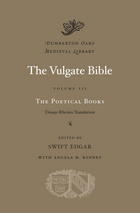
This is the third volume of a projected six-volume set of the complete Vulgate Bible. Compiled and translated in large part by Saint Jerome at the turn of the fifth century CE, the Vulgate Bible permeated the Western Christian (and later specifically Catholic) tradition from the early medieval period through the twentieth century. It influenced literature, visual arts, music, and education during the Middle Ages and Renaissance, and its contents lay at the heart of Western theological, intellectual, artistic, and even political history during that period. At the end of the sixteenth century, as Protestant vernacular Bibles became available, professors at a Catholic college first at Douay, then at Rheims, translated the Vulgate Bible into English, primarily to combat the influence of rival theologies.
Volume III presents the Poetical Books of the Bible. It begins with Job’s argument with God, and unlike other Bibles the Vulgate insists on the title character’s faith throughout that crisis. The volume proceeds with the soaring and intimate lyrics of the Psalms and the Canticle of Canticles. Three books of wisdom literature, all once attributed to King Solomon, also are included: Proverbs, Ecclesiastes, and Wisdom. Ecclesiasticus, an important deuterocanonical book of wisdom literature, concludes the volume. The seven Poetical Books mark the third step in a thematic progression from God’s creation of the universe, through his oversight of grand historical events, and finally into the personal lives of his people.
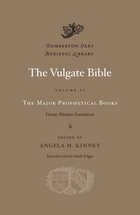
This is the fourth volume of a projected six-volume Vulgate Bible. Compiled and translated in large part by Saint Jerome at the turn of the fifth century ce, the Vulgate Bible permeated the Western Christian tradition through the twentieth century. It influenced literature, art, music, and education, and its contents lay at the heart of Western theological, intellectual, artistic, and political history through the Renaissance. At the end of the sixteenth century, professors at a Catholic college first at Douay, then at Rheims, translated the Vulgate Bible into English to combat the influence of Protestant vernacular Bibles.
Volume IV presents the writings attributed to the “major” prophets (Isaiah, Jeremiah, Ezekiel, and Daniel), which feature dire prophecies of God’s impending judgment, punctuated by portentous visions. Yet profound grief is accompanied by the promise of mercy and redemption, a promise perhaps illustrated best by Isaiah’s visions of a new heaven and a new earth. In contrast with the Historical Books, the planned salvation includes the gentiles.
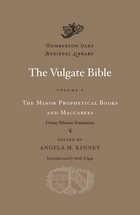
This is the fifth volume of a projected six-volume Vulgate Bible. Compiled and translated in large part by Saint Jerome at the turn of the fifth century ce, the Vulgate Bible permeated the Western Christian tradition through the twentieth century. It influenced literature, art, music, and education, and its contents lay at the heart of Western theological, intellectual, artistic, and political history through the Renaissance. At the end of the sixteenth century, professors at a Catholic college first at Douay, then at Rheims, translated the Vulgate Bible into English to combat the influence of Protestant vernacular Bibles.
Volume V presents the twelve minor prophetical books of the Old Testament, as well as two deuterocanonical books, 1 and 2 Maccabees. While Jewish communities regarded the works of the twelve minor prophets as a single unit (the Dodecapropheton), the Vulgate Bible treats them individually in accordance with Christian tradition. The themes of judgment and redemption featured prominently in the major prophets (Volume IV) are further developed by the minor prophets. The books of 1 and 2 Maccabees conclude the volume. Their doctrinal controversies and highly influential martyrdom narratives anticipate the development of Christian hagiography both as a genre and as a theological vehicle.

This volume completes the six-volume Vulgate Bible. Compiled and translated in large part by Saint Jerome at the turn of the fifth century ce, the Vulgate Bible permeated the Western Christian tradition through the twentieth century. It influenced literature, art, music, and education, and its contents lay at the heart of Western theological, intellectual, artistic, and political history through the Renaissance. At the end of the sixteenth century, professors at a Catholic college first at Douay, then at Rheims, translated the Vulgate Bible into English to combat the influence of Protestant vernacular Bibles.
Volume VI presents the entirety of the New Testament. The gospel narratives delineate the story of Jesus’s life, death, and resurrection. Acts continues the account of the first Christians, including the descent of the Holy Spirit, the conversion of Saul of Tarsus (the Apostle Paul), and the spread of Christianity through sermons and missionary journeys. Collected epistles answer theological and pragmatic concerns of early church communities. Of these epistles, Romans is notable for its expression of Paul’s salvation theory, and Hebrews for its synthesis of Jewish and Hellenistic elements. The apocalyptic vision of Revelation concludes the volume with prophecies grisly and glorious, culminating in the New Jerusalem.
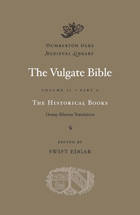
This is the second volume, in two parts, of a projected six-volume set of the complete Vulgate Bible.
Compiled and translated in large part by Saint Jerome at the turn of the fifth century CE, the Vulgate Bible was used from the early medieval period through the twentieth century in the Western Christian (and later specifically Catholic) tradition. It influenced literature, visual arts, music, and education during the Middle Ages and Renaissance, and its contents lay at the heart of Western theological, intellectual, artistic, and even political history during that period. At the end of the sixteenth century, as Protestant vernacular Bibles became available, professors at a Catholic college first at Douay, then at Rheims, translated the Vulgate Bible into English, primarily to combat the influence of rival theologies.
Volume II presents the Historical Books of the Bible, which tell of Joshua’s leading the Israelites into the Promised Land, the judges and kings, Israel’s steady departure from God’s precepts, the Babylonian Captivity, and the return from exile. The focus then shifts to shorter, intimate narratives: the pious Tobit, whose son’s quest leads him to a cure for his father’s blindness; Judith, whose courage and righteousness deliver the Israelites from the Assyrians; and Esther and Mordecai, who saved all the Jews living under Ahasuerus from execution. These three tales come from books that were canonical in the Middle Ages but now are often called “apocryphal,” with the partial exception of the Book of Esther.
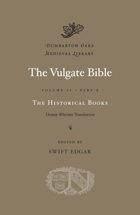
This is the second volume, in two parts, of a projected six-volume set of the complete Vulgate Bible.
Compiled and translated in large part by Saint Jerome at the turn of the fifth century CE, the Vulgate Bible was used from the early medieval period through the twentieth century in the Western Christian (and later specifically Catholic) tradition. It influenced literature, visual arts, music, and education during the Middle Ages and Renaissance, and its contents lay at the heart of Western theological, intellectual, artistic, and even political history during that period. At the end of the sixteenth century, as Protestant vernacular Bibles became available, professors at a Catholic college first at Douay, then at Rheims, translated the Vulgate Bible into English, primarily to combat the influence of rival theologies.
Volume II presents the Historical Books of the Bible, which tell of Joshua’s leading the Israelites into the Promised Land, the judges and kings, Israel’s steady departure from God’s precepts, the Babylonian Captivity, and the return from exile. The focus then shifts to shorter, intimate narratives: the pious Tobit, whose son’s quest leads him to a cure for his father’s blindness; Judith, whose courage and righteousness deliver the Israelites from the Assyrians; and Esther and Mordecai, who saved all the Jews living under Ahasuerus from execution. These three tales come from books that were canonical in the Middle Ages but now are often called “apocryphal,” with the partial exception of the Book of Esther.
READERS
Browse our collection.
PUBLISHERS
See BiblioVault's publisher services.
STUDENT SERVICES
Files for college accessibility offices.
UChicago Accessibility Resources
home | accessibility | search | about | contact us
BiblioVault ® 2001 - 2024
The University of Chicago Press









